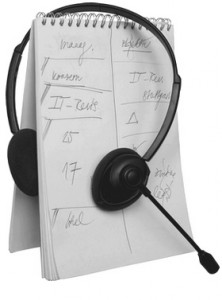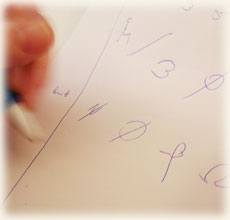
The interpretation should be approximately equal in length to the original speech, though chances are high that the event itself will be twice as long. As a result, consecutive interpretation has lost ground in the market to simultaneous interpretation.
The advantages of consecutive interpretation are that is does not require the same technology that simultaneous interpretation imposes (soundproof booths, audio consoles, headphones), it only requires a notepad and a pen or pencil (several, if possible to have backups available in the event the initial one breaks, runs out of ink, or any other of a number of possibilities), and only one interpreter is working at a time.
This service can be used at a any event where there are few people, for example bilingual meetings, business meals, classes, seminars with a small audience, among many others.
Taking Notes

Suggestions on Taking Notes
- It is crucial that the interpreter not lose visual contact with the speaker. Therefore, he or she must not be focused on what is being written.
- Take notes in a space that leaves you plenty of room. It is much easier to read notes at a simple glance when the text is not bunched together.
- Write down only the basic information of the sentence: who? when? how? and why?
- Write down the essential connectors, such as “however”, “then”, “if”, etc. (possibly in the margin) for this essential information. These summarize the meaning in your memory. It is much easier to recreate the logic of the speech this way, even if some details are omitted.
- Make sure you include dates, numbers, and names; they are very difficult to remember otherwise.
- If the speaker lists something, for example, “There are a total of five factors: …”, make sure to write down all five, ideally in the form of a list.
- Write down who says what.
- Use drawings, abbreviations, and symbols that are clear. It makes no sense to learn a complicated system that you probably will forget or confuse in stressful situations when you need it the most.
If you are in need of simultaneous interpretation services, visit Trusted Translation’s interpretation page.
(Spanish version: https://www.trustedtranslations.com/interpretacion-consecutiva-2010-05-05.html)





